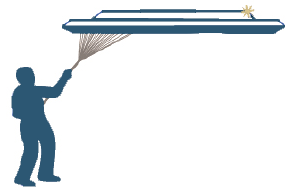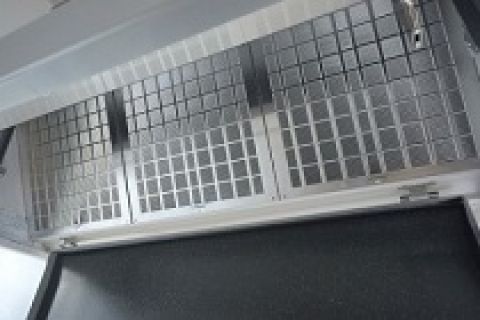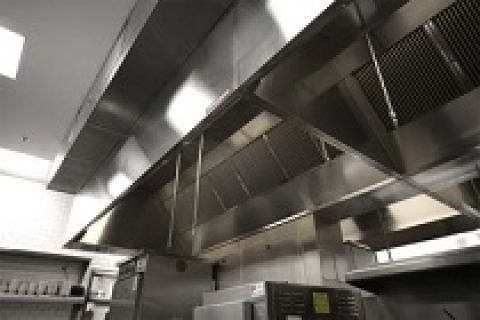Top Signs It’s Time to Deep Clean Your Restaurant Ceiling, Walls, and Floors
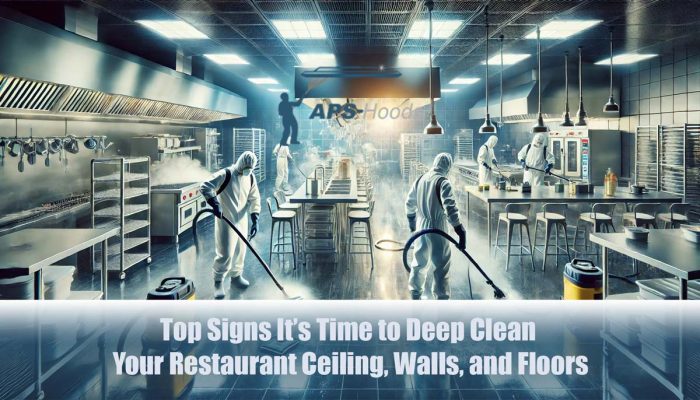
Cleanliness is the cornerstone of a successful food establishment. Whether it’s an upscale French bistro or a casual diner, both staff and patrons expect an environment that is pristine and inviting. After all, a restaurant is not just a place to dine; it’s a space where people gather to share experiences and create memories. A spotless ambiance reflects the care and professionalism of the business, fostering trust and loyalty among guests.
However, even when a restaurant appears clean on the surface, there may be hidden issues lurking beneath. Grease buildup, unnoticed mold, and lingering odors can accumulate over time, impacting not only the visual appeal but also the health and safety of your staff and customers. This is why deep cleaning is not just an option—it’s a necessity.
In this article, we’ll explore the most telling signs that your restaurant’s ceilings, walls, and floors need a professional deep clean. From mold growth to pest activity, identifying these issues early can save your business from potential health code violations and reputation damage. Let’s dive into why maintaining a rigorous cleaning schedule is essential for every restaurant.
Don’t let grease buildup, hidden contaminants, or neglected surfaces disrupt your operations or tarnish your restaurant’s reputation. Call APS-Hoods at 800-750-7313 to schedule your next service.
The Critical Role of Ceiling, Walls, and Floors Cleanliness in Restaurant Hygiene
Maintaining spotless ceilings, walls, and floors in a restaurant isn’t just about aesthetics—it’s a fundamental aspect of food safety and customer satisfaction. These surfaces often go unnoticed during routine cleaning, yet they can become hotspots for grease, bacteria, mold, and other contaminants. When left unaddressed, these hidden problems can compromise air quality, create unpleasant odors, and even pose serious health risks to your staff and patrons.
Beyond appearance, cleanliness plays a pivotal role in protecting your business’s reputation. Consider these eye-opening statistics from Jolt.com:
- 66% of customers will not return to a restaurant they perceive as unclean.
- 75% of patrons refuse to visit an establishment again unless there’s a visible change in management or practices.
- Three out of four customers steer clear of restaurants with negative cleanliness reviews.
These numbers highlight the financial impact of neglecting restaurant hygiene. One poor review or a single health code violation can significantly harm your business. Ensuring clean surfaces not only keeps your customers safe but also builds trust and loyalty, contributing to long-term success.
The Connection Between Cleanliness and Customer Loyalty
Cleanliness is more than a regulatory requirement in the restaurant industry—it’s a key driver of customer loyalty. When patrons step into your establishment, the first thing they notice is the environment. Pristine ceilings, spotless floors, and fresh air convey professionalism and attention to detail, instantly building trust. On the other hand, signs of neglect, like lingering odors or visible grime, can leave a lasting negative impression.
How Cleanliness Influences Customer Behavior:
- First Impressions Matter:
- According to research, 66% of customers won’t return to a restaurant they perceive as unclean. A spotless space assures guests they’re dining in a hygienic, well-maintained environment.
- Positive Reviews and Word-of-Mouth:
- Clean restaurants are more likely to receive glowing reviews and personal recommendations. In today’s digital age, one positive review can lead to a surge in bookings.
- Long-Term Loyalty:
- When customers feel comfortable and safe, they’re more likely to return and become regular patrons. Cleanliness creates a welcoming atmosphere that encourages repeat visits.
- Avoiding the Risk of Negative Feedback:
- On the flip side, cleanliness issues are one of the most common complaints in online reviews. A single bad review about hygiene can deter potential customers and damage your reputation.
Why Walls, Ceilings, and Floors Need Special Attention
While front-of-house cleaning focuses on visible areas, back-of-house surfaces like kitchen walls, floors, and ceilings often bear the brunt of daily operations. Grease splatter, moisture buildup, and airborne particles from cooking can settle on these surfaces, creating a breeding ground for bacteria and mold. Over time, this can lead to:
- Health Hazards: Mold and mildew can trigger allergies and respiratory issues, affecting both employees and guests.
- Structural Damage: Grease buildup can weaken surfaces, leading to costly repairs.
- Pest Infestations: Unclean environments attract pests, which can lead to health code violations and loss of business.
A proactive approach to cleaning these areas ensures not only a safer environment but also compliance with strict health and safety regulations. Regular inspections and professional cleaning services are essential for addressing these hidden risks before they escalate.
Common Signs Your Restaurant Needs a Professional Deep Cleaning
Even with a regular cleaning routine, there are times when deeper issues arise that require more than surface-level solutions. Your restaurant’s ceilings, walls, and floors endure heavy wear and tear daily, becoming prime areas for grease buildup, moisture accumulation, and other contaminants. Ignoring these problem areas can lead to health risks, unpleasant dining experiences, and costly repairs.
To help you identify when it’s time to act, here are the most common signs your restaurant is overdue for a professional deep cleaning:
1. Visible Mold and Mildew on Walls
Mold and mildew thrive in humid environments, especially in kitchens and bathrooms. Even small patches can spread quickly, releasing harmful spores into the air.
Why It Matters:
- Mold can trigger allergies and respiratory problems for staff and patrons.
- Visible mold creates an unappealing environment, undermining your restaurant’s reputation.
- Failure to address mold can lead to health code violations and potential closures.
Solution: Regular inspections and professional cleaning services can safely eliminate mold and implement preventative measures.
2. Grease Build-Up on Ceilings
Commercial kitchens naturally produce grease, which accumulates on ceilings over time. This buildup can create stains, odors, and even safety hazards.
Why It Matters:
- Grease buildup reduces air quality and contributes to lingering odors.
- It poses a significant fire hazard, endangering your staff and guests.
- Stained ceilings diminish the overall cleanliness and appeal of your restaurant.
Solution: Periodic deep cleanings and proper ventilation maintenance ensure a safer, fresher environment.
3. Lingering Unpleasant Odors
Persistent odors in your kitchen or dining area often indicate hidden grease, mold, or food debris. These smells can linger even after regular cleaning efforts.
Why It Matters:
- Unpleasant odors can deter customers and negatively impact their dining experience.
- Lingering smells may signal deeper hygiene issues that could lead to pest infestations.
- Odors create an impression of neglect, reducing trust in your establishment.
Solution: Identify odor sources and target them with deep cleaning that reaches hidden and hard-to-clean areas.
4. Stained or Sticky Floors and Countertops
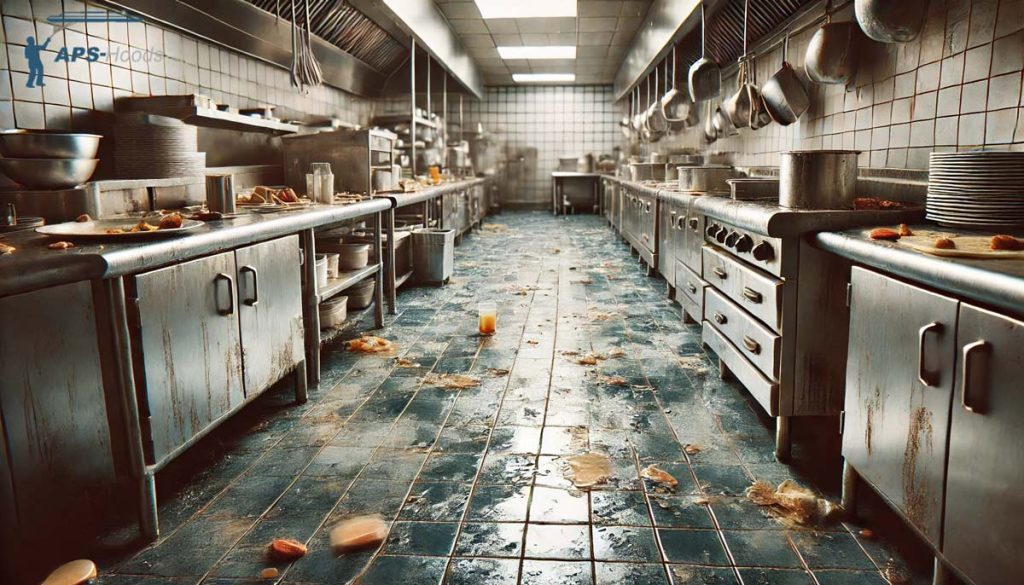
Sticky floors and countertops are clear signs of grease and grime accumulation. High-traffic areas are particularly prone to staining, which regular cleaning may not completely remove.
Why It Matters:
- Sticky floors increase the risk of slips and falls, endangering staff and customers.
- Stains and grime create a negative visual impression, impacting customer perceptions of cleanliness.
- Long-term neglect can lead to permanent damage, requiring expensive replacements.
Solution: Use high-quality cleaning products and professional services to restore surfaces to their original condition.
5. Increased Pest Activity
Rodents, insects, and other pests are drawn to food debris and grease left in unclean areas. Sightings of pests or their droppings are clear indicators of hygiene issues.
Why It Matters:
- Pest infestations can result in health code violations, hefty fines, or forced closures.
- Pests are a major turn-off for customers and can lead to damaging online reviews.
- Contaminants left by pests can compromise food safety and lead to serious illnesses.
Solution: Follow EPA pest control guidelines and invest in professional deep cleaning to eliminate food sources and sanitize affected areas.
Why You Should Act Quickly
The signs above don’t just indicate cleanliness issues—they also highlight risks to your restaurant’s operations, reputation, and revenue. Acting promptly can prevent small problems from escalating into significant challenges, such as health code violations or costly repairs. Partnering with a professional cleaning service ensures your establishment remains a safe, welcoming place for employees and guests alike. Failure to address these issues can lead to health code violations, fines, and potential closures. Learn more about restaurant sanitation standards here.
Take Action Today to Safeguard Your Business! Call APS-Hoods at 800-750-7313 now to request your FREE consultation.
Tips for Effective Deep Cleaning of Restaurant Ceiling, Walls, and Floors
In this section, I’m going to share a practical guide on some of the most important considerations when it comes to a clean restaurant environment:
| ❌ Don’ts | ✅ Do’s |
| Don’t attempt to deep-clean strong solutions | Follow a clear and regular cleaning schedule |
| Don’t neglect ventilation and hood systems | Use proper cleaning agents for each part |
| Don’t ignore safety instructions | Focus on areas that are hard to reach – terrible things can pile up here! |
| Don’t attempt cleaning during peak hours – deep clean only on off days! | Wear protective gear if you’re working on it yourself – |
| Avoid seeking help from professionals when it comes to deep cleaning | Double-check surfaces even after deep cleaning |
| Don’t delay or ignore scheduled cleaning | Contact professionals for inspection and deep cleaning |
| Don’t let buildups happen – it’ll often be too late to clean! | Keep yourself updated with the latest guidelines by your local government. |
Frequently Asked Questions About Deep Cleaning for Restaurants
Deep cleaning a restaurant isn’t just about aesthetics—it’s essential for maintaining hygiene, ensuring safety, and complying with health regulations. Below, we answer some of the most common questions restaurant owners and managers have about deep cleaning ceilings, walls, and floors.
1. What Is the Difference Between Regular Cleaning and Deep Cleaning?
Regular Cleaning: This typically involves routine tasks like wiping surfaces, sweeping floors, and sanitizing commonly touched areas. It’s meant to maintain a day-to-day level of cleanliness and remove visible dirt or debris.
Deep Cleaning: Deep cleaning goes far beyond the surface. It targets hard-to-reach areas, removes deeply embedded grime, grease, and bacteria, and focuses on preventing long-term issues like mold and pest infestations. This level of cleaning often requires professional expertise and specialized equipment.
Pro Tip: While regular cleaning should be done daily, deep cleaning should be scheduled periodically based on your restaurant’s activity level.
2. How Often Should a Restaurant Deep Clean Its Ceilings, Walls, and Floors?
The frequency of deep cleaning depends on various factors, including:
- The volume of daily operations.
- The type of food preparation (greasy or high-moisture cooking requires more frequent cleaning).
- Environmental conditions like humidity levels.
General Recommendations:
- High-Traffic Kitchens: Every 1-3 months.
- Moderate-Traffic Kitchens: Every 3-6 months.
- Low-Traffic or Seasonal Kitchens: At least once a year.
If you notice signs like grease buildup, mold, or lingering odors, schedule a deep cleaning immediately, regardless of your routine schedule.
3. What Are the Best Practices for Cleaning Grease Build-Up on Ceilings?
Grease buildup on ceilings not only looks unsightly but also poses fire hazards. The key to effective grease removal is using the right cleaning techniques:
- Use degreasers specifically formulated for commercial kitchen cleaning.
- Avoid using abrasive tools that can damage surfaces.
- Clean exhaust hoods and ventilation systems regularly to prevent grease from settling on ceilings.
Pro Tip: Hiring a professional cleaning service like APS-Hoods ensures thorough grease removal and reduces fire risks.
4. Can Regular Cleaning Prevent Mold and Mildew on Walls?
Regular cleaning can help control mold and mildew growth, but it’s not always enough to prevent it entirely. High-humidity areas, such as kitchens and bathrooms, are particularly prone to mold, especially in corners and other hard-to-reach spots.
Solution: Combine regular cleaning with periodic deep cleaning and proper ventilation to minimize mold risks. Use mold-resistant paint and professional-grade cleaners to further safeguard your walls.
5. What Cleaning Products Are Effective for Deep Cleaning?
The effectiveness of cleaning products depends on the surface and type of contaminant. Here are some general recommendations:
- Grease Removal: Heavy-duty degreasers approved for commercial kitchens.
- Mold and Mildew: EPA-approved mold removal sprays and disinfectants.
- Floors: Non-slip cleaners designed for restaurant-grade flooring.
- Walls and Ceilings: Gentle yet effective all-purpose cleaners to avoid surface damage.
For best results, consult with professionals to ensure you’re using the right products for your specific needs.
6. What Are the Costs of Professional Deep Cleaning?
The cost of professional deep cleaning services for a restaurant can vary widely based on several factors, including:
- Size of the Restaurant: Larger spaces require more time, resources, and labor.
- Extent of Cleaning Required: Deep cleaning that includes grease removal, mold remediation, or pest control will be more comprehensive and may cost more than routine cleaning.
- Frequency of Service: Scheduling regular cleanings often leads to lower per-visit costs compared to one-off emergency services.
- Type of Services Needed: Specialized services like HVAC and hood cleaning, ceiling degreasing, or floor restoration can influence the price.
For an accurate quote tailored to your restaurant’s specific requirements, contact APS-Hoods at 800-750-7313. Our team provides cost-effective solutions to ensure your restaurant remains clean, safe, and compliant.
Why You Should Prioritize Deep Cleaning

Deep cleaning isn’t just a regulatory requirement—it’s an investment in your business’s longevity. Regularly maintaining a clean and safe environment helps:
- Prevent costly repairs and replacements.
- Protect your reputation and avoid negative reviews.
- Enhance staff productivity by ensuring a healthy workplace.
Final Thoughts: The Importance of Deep Cleaning in Restaurants
Running a successful restaurant isn’t just about crafting delicious meals and delivering exceptional service—it’s also about creating a clean and inviting environment where guests feel comfortable and safe. Hygiene plays a pivotal role in shaping customer perceptions, maintaining health standards, and ensuring the longevity of your business.
From ceilings stained with grease to floors that accumulate grime in hard-to-reach areas, neglecting deep cleaning can lead to costly repairs, health code violations, and even reputational damage. Regular deep cleaning of your restaurant’s ceilings, walls, and floors is not just a best practice—it’s a non-negotiable aspect of operating a compliant and customer-friendly establishment.
The Benefits of Regular Deep Cleaning
- Protects Health and Safety
Deep cleaning removes harmful contaminants, bacteria, mold, and grease, ensuring your staff and patrons are in a safe and healthy environment. Cleaner air, slip-free floors, and hygienic surfaces contribute to a better dining experience. - Maintains Compliance with Health Regulations
Health inspections can be stringent, and failing to meet cleanliness standards could lead to hefty fines, temporary closures, or worse—a tarnished reputation. Regular deep cleaning ensures your restaurant remains compliant and inspection-ready. - Extends the Life of Equipment and Surfaces
Grease, grime, and debris can wear down floors, ceilings, and equipment over time. Routine deep cleaning protects these investments, reducing the need for costly replacements and repairs. - Enhances Customer Experience and Loyalty
A clean environment speaks volumes about your commitment to quality and professionalism. Customers are more likely to return and recommend your restaurant if they feel confident in its cleanliness.
The APS-Hoods Advantages
At APS-Hoods, we understand the unique challenges restaurant owners face when it comes to maintaining cleanliness and safety in Denver, CO. Our professional deep cleaning services are designed to address every aspect of your commercial kitchen and dining space, from removing grease buildup on ceilings to sanitizing high-traffic floors. With our expertise, you can focus on what you do best—delivering exceptional dining experiences.
Protect Your Restaurant with APS-Hoods in Denver, CO
Take the guesswork out of deep cleaning and leave it to the professionals. APS-Hoods offers comprehensive cleaning solutions tailored to your restaurant’s needs, ensuring your business stays compliant, your staff stays safe, and your customers stay happy.
A clean restaurant isn’t just good for business—it’s a reflection of your values. Partner with APS-Hoods to ensure every corner of your establishment is spotless and welcoming.
Tags: all restaurant cleaning, Commercial Kitchen Cleaning, commercial kitchen cleaning denver, Deep Cleaning
Trackback from your site.
